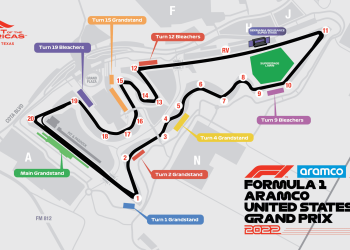In the high-octane world of Formula 1, every millisecond counts, and the aerodynamic efficiency of a race car can make the difference between champagne showers and disappointment. Let’s talk about one key component of aero design: boundary layers. Boundary layers are thin regions of fluid flow near their contact surfaces where frictional forces, velocity changes, and turbulence really hold sway. Understanding and mastering them is crucial for creating that winning edge. But what exactly are boundary layers, and why do they matter in Formula 1 car design?
Racetrack Dynamics: What are Boundary Layers?
To paint a picture, let’s imagine air flowing over a Formula 1 car. In an ideal world, the air would glide smoothly past the car’s surface. Yet, close to the car’s skin, there’s this thin veil—a boundary layer—where air doesn’t move quite as uniformly. The bit closer to the surface sticks more due to viscosity. The behavior in this layer greatly influences drag and downforce, which are cardinal for car stability and speed.
Did you know? The concept of boundary layers was first introduced by a German engineer named Ludwig Prandtl in the early 1900s. This discovery was revolutionary for aerodynamics and fluid mechanics, helping engineers craft more efficient vehicles—thanks, Ludwig!
The Art of Managing Flow Separation
Now, you might wonder, what happens within the boundary layer? Well, it might stay “laminar”—moving smoothly—or become “turbulent,” leading to what’s called “flow separation.” When separation occurs, eddies and vortices can cause a dramatic loss in lift and an increase in drag. Managing these aspects allows F1 teams to push the car’s speed and cornering abilities to the limits.
Is it all bad news then? Not really. Engineers actually use vortex generators and winglets to control separation! By keeping airflow attached to surfaces for longer, they minimize drag and maximize downforce. The rear wing of a Formula 1 car, for instance, is a champion at this.
Computational Fluid Dynamics: The Digital Wind Tunnel
Now here’s where it gets nerdy and immensely cool! Computational Fluid Dynamics (CFD) allows engineers to simulate airflow around the designs without needing to huddle in a stuffy wind tunnel constantly. CFD models predict how changes in car design will affect boundary layers, offering a glimpse into what’s possible without physically testing every iteration on track. It’s like giving engineers a magical lens to see air!
Interesting Fact: Some top Formula 1 teams, like Mercedes and Red Bull, spend sleepless nights crunching petabytes of CFD data to find that edge. It’s not just about speed; it’s an ongoing obsession with relentless improvement.
Inspirations from Nature: Biomimetics in Engine Design
You’ve likely marveled at birds gliding smoothly through the air. Why not take some pointers from them? Engineers often look at nature for insights, leading to innovations like the tubercles on humpback whales’ fins inspiring more aerodynamic wing designs! Mimicking these natural patterns helps in manipulating boundary layers effectively.
Bringing the Insights Home
Formula 1 teams spend seasons optimizing boundary layers, but this knowledge seeps into everyday road car technology eventually. Spoilers, diffusers, and underbody designs of family cars often owe their efficiency to lessons learned on the racetrack.
Tip: When you’re next choosing a car, remember that much of its fuel efficiency and handling might owe a nod to boundary layer research in F1 design labs.
The Five Things Every F1 Fan Should Know
- Boundary layers affect drag and downforce, two pivotal elements for Formula 1 success.
- An understanding of flow separation and how to control it can transform a car’s aerodynamic performance.
- CFD offers a virtual pathway to explore limitless design possibilities.
- Observing natural flyers provide breakthroughs in design innovation.
- Your everyday car is likely a descendant of such cutting-edge F1 tech!
FAQs
Why are boundary layers so important in F1 car design?
Boundary layers dictate how smoothly air can move over surfaces. Improved handling of these layers means enhancing car performance by reducing drag and increasing downforce.
What is the difference between laminar and turbulent boundary layers?
Laminar layers are smooth and orderly, whereas turbulent ones act chaotically. Turbulent flow can cause flow separation leading to drag, which isn’t ideal for speed.
In Conclusion
Boundary layers hold immense power in F1 designs. They can define or defy the race outcomes. Understanding them is as much science as it’s an art. Whether gliding past the competition on the racetrack or improving fuel efficiency on our daily drives, their influence is undeniable. Thank you for joining us on this fascinating journey. Be sure to check out other articles on our website to keep your curiosity racing!

Boundary Layer Comparison Table
| Aspect | Laminar Flow | Turbulent Flow |
|---|---|---|
| Flow Type | Smooth and orderly | Chaotic and mixed |
| Drag Effect | Lower drag | Higher drag |
| Associated Risks | Less prone to separation | Increased separation risk |
| Main Use in F1 | Surface skin drag reduction | Downforce and grip optimization |















